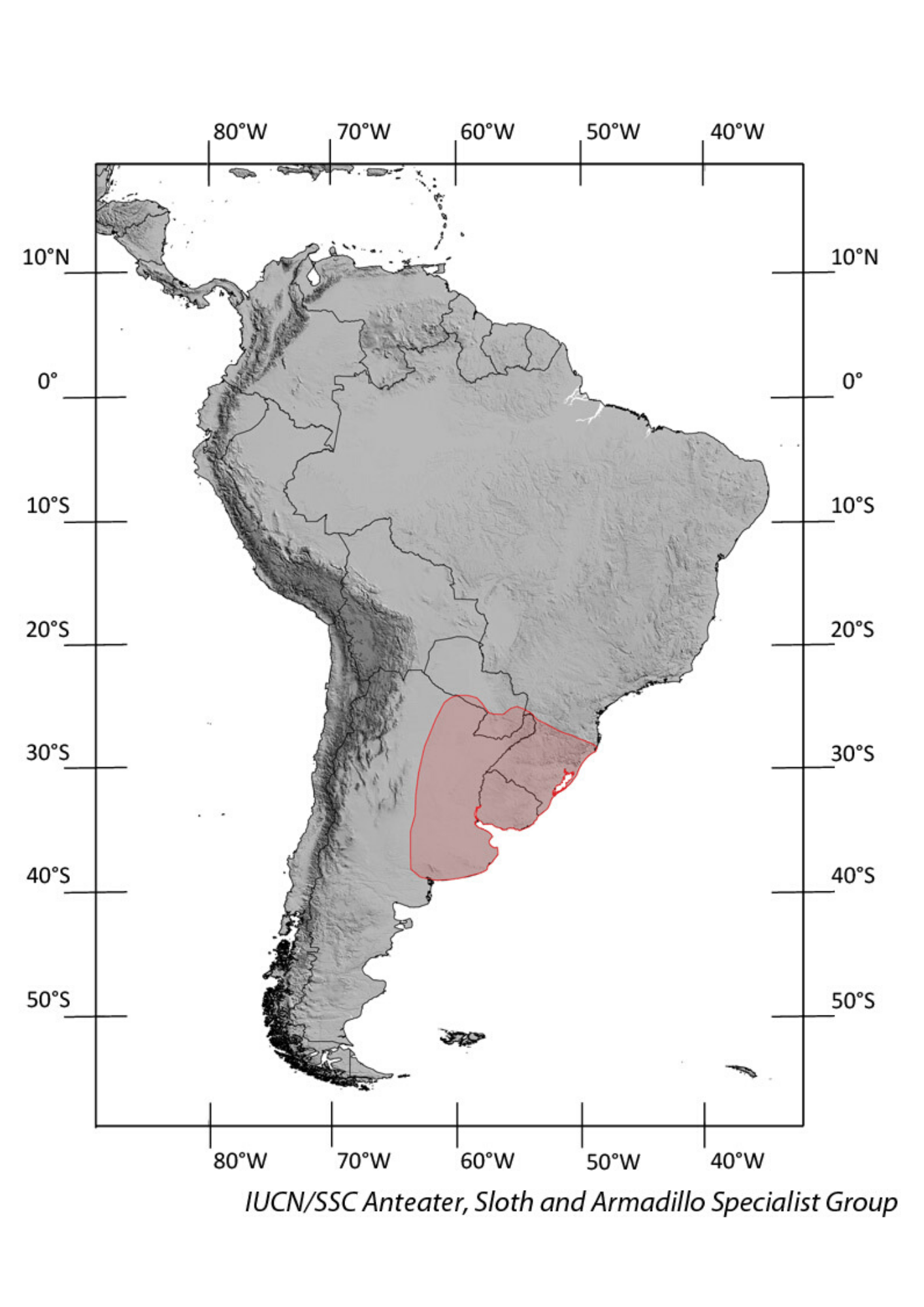Southern long-nosed armadillo
(Dasypus hybridus)
other common names
Southern lesser long-nosed armadillo
Taxonomy
Order: Cingulata
Family: Dasypodidae
Subfamily: Dasypodinae


description
The southern long-nosed armadillo has a head-body length of 26–31 cm, a tail length of 15–19 cm, a slender head, and an ear length of 2–3 cm. Its carapace has 6–7, sometimes 8 bands. It weighs around 2 kg.

diet
This is an opportunistic insectivore, although some consider it an omnivore with a strong preference for ants and termites. In addition to ants, termites, and beetles, it ingests plant material and sometimes vertebrates, such as young mice, amphibians, and reptiles.

range
Dasypus hybridus is found in Argentina, Uruguay, Paraguay, and southern Brazil. It occurs as far south as the province of Buenos Aires, Argentina The exact northern limit of its range is uncertain due to its morphological similarity to Dasypus septemcinctus (some recent studies suggest that they are synonyms), while the western limit is unclear due to its similarity with D. mazzai. It occurs from sea level to 2,000 m asl.

Population trend
Decreasing.

curious facts
Its Spanish name, “mulita” (=small mule), refers to its proportionally large, mule-like ears. It is one of the few mammal species that always gives birth to at least 6 offspring in spite of having only 4 mammary glands.

threats
Dasypus hybridus is threatened by habitat loss through agriculture and urbanization, accidental mortality on roads, direct hunting for food and predation by dogs.

HaBITAT and ECOLOGy
This diurnal armadillo species is typically found in the grasslands and pampas of northern and central Argentina. It is also present, but less common, in agroecosystems, woodland and forest habitats. It was previously common (although there are no population density estimates available), but it is sensitive to habitat loss through urbanization, and agricultural expansion has meant that populations are declining or are absent over much of its former range. It remains a common species in parts of its range, such as different areas in the province of Buenos Aires.

reproduction
The breeding season seems to begin in March. A diapause of approximately 120 days occurs after fertilization. The young are born between October and December. Six to twelve young per litter are born in underground burrows; they are probably monozygotic, i.e., genetically identical, which is a typical feature of the genus Dasypus. The offspring remain in the burrow until they are weaned at around 2 months of age.

conservation status
Dasypus hybridus is listed as Near Threatened as it is believed to have undergone a decline of approximately 20 to 25% over the past three generations (suspected to be around 12 years) due to severe habitat loss and hunting throughout its range. The species was previously more widespread and locally more common (over 30 years ago). It almost qualifies as threatened under criterion A2cd.